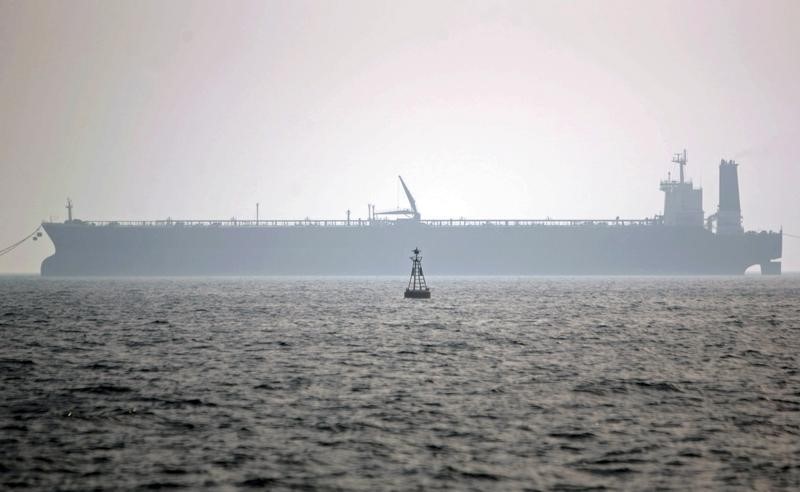By Barani Krishnan
Investing.com - The second tanker attack episode within a month in the Middle East produced interesting results for crude prices last week. The market surged right after Thursday’s attacks in the Gulf of Oman on fears of heightened risk for oil shipments. By the next session though, oil was struggling to hold on to its gains on worries about weak crude demand.
Despite two straight days of gains, U.S. West Texas Intermediate crude lost almost 3% on the week and U.K. Brent 2%.
Analysts provided a variety of reasons for the outcome. Among them was the ongoing U.S.-China trade war and its impact on the global economy; the latest U.S. crude build cited by the Energy Information Administration (EIA) on Wednesday; and the less-than-stellar global oil demand forecast by the International Energy Agency (IEA) in its June report Friday.
If there was a common thread running here, it was that even the most terrifying supply scare cannot force you to buy additional oil you have no need for.
And there's a lot of oil -- emphasis added, a lot -- coming to the market in the next few months, if forecasts by the Paris-based IEA and the U.S. EIA are to be believed. Even the Organization of the Petroleum Exporting Countries expects lower demand in the second half for the crude it produces. OPEC is looking to deepen supply cuts when it meets later this month essentially because non-OPEC countries, led by the U.S., are producing more.
On the broader commodities front, what oil couldn't achieve from the tanker attacks in the Gulf of Oman gold did.
Both spot and futures of gold blew past the $1,350 resistance on Friday as global tensions from the attacks added to the investor fervor already building in gold from expectations of a Fed rate cut.
Energy Review
Before last week, some analysts were murmuring about reduced geopolitical risk for oil if Japanese Prime Minister Shinzo Abe gets to strike a truce between Iran and the United States. Volunteering himself as Trump’s emissary, Abe met Iranian President Hassan Rouhani and Supreme Leader Ayatollah Ali Khamenei in Tehran last week. From what it appears, after the handshakes and pleasantries, Abe was advised by his hosts to go home and focus on Japan’s headaches instead. News of Thursday's tanker attacks, which the U.S. blamed on Iran, came even before Abe's plane took off. Not surprisingly, Trump later said it was "too soon to even think about making a deal" with Iran, which, nevertheless, denied responsibility for the tanker hits.
If anything, the episode in the Gulf of Oman has considerably escalated tensions in the region, without accompanying premium.
Olivier Jakob of the PetroMatrix consultancy in Zug, Switzerland, summed it up succinctly when he observed that since mid-May, there has been an attack on a main Saudi crude oil pipeline and two separate hits on oil tankers near the Strait of Hormuz but oil prices had lost more than $10 a barrel in that time.
"Whoever did this, took the precaution to target tankers with cargoes of light petroleum products, avoiding the risk of a major crude oil spill near the shores of Iran," Jakob said.
"In our opinion, product carriers face a greater risk of repeated attacks than crude oil tankers, due to the pollution risk that local malicious actors will try to avoid," he said, adding that freight costs were likely to spike instead of oil prices due to the higher insurance premium for carriers in the Gulf now.
In conclusion, Jakob said: "For now, the war on trade is having a greater impact on oil prices than the war on tankers and market participants refuse to take the tanker attacks seriously, at least until a fully laden crude oil VLCC is hit."
Energy Calendar Ahead
Tuesday, June 18
American Petroleum Institute weekly report on oil stockpiles.
Wednesday, June 19
The EIA weekly report on oil stockpiles.
Thursday, June 20
EIA weekly natural gas report
Friday, June 21
Baker Hughes weekly rig count.
Precious Metals Review
Gold set up its next resistance test at $1,400 an ounce as heightened geopolitical risks in the Middle East pushed the yellow metal to 14-month highs.
Spot gold, reflective of trades in bullion, hit $1,358.13, its highest level since April 2018 last week.
Gold futures for August delivery, traded on the Comex division of the New York Mercantile Exchange, hit session highs of $1,361.95.
Gold is a hedge for investors in times of economic and political troubles.
Investors have piled into the yellow metal over the past two weeks on worries that the worsening U.S.-China trade war may tip the world into a recession.
That has, in turn, led to hopes that the Federal Reserve will cut interest rates to preserve U.S. economic growth, which has been in a record expansion streak of nearly a decade. The Fed will issue its policy statement for June after meetings on Tuesday and Wednesday.
"Tariff tiffs, global economic woes and political headlines also all coming together for investors in gold," said George Gero, precious metals analyst at RBC Wealth Management in New York.
"The Fed may be forced to look deeper into cutting rates."
Precious Metals Calendar Ahead
Monday, June 17
NY Empire State Manufacturing Index (Jun)
U.S. NAHB Housing Market Index (Jun)
Tuesday, June 18
China House Prices (May)
German ZEW (Jun)
Eurozone CPI (May)
U.S. Building Permits; Housing Starts (May)
Wednesday, June 19
U.K. CPI (May)
Federal Reserve Rate Statement, Press Conference
Thursday, June 20
Bank of Japan Rate Decision
Bank of England Rate Decision
U.S. Initial Jobless Claims
Philly Fed Index (Jun)
Friday, June 21
Eurozone PMIs (Jun)
U.S. Manufacturing PMI (Jun)
U.S. Markit Composite PMI
U.S. Services PMI (Jun)
U.S Existing Home Sales (May)
